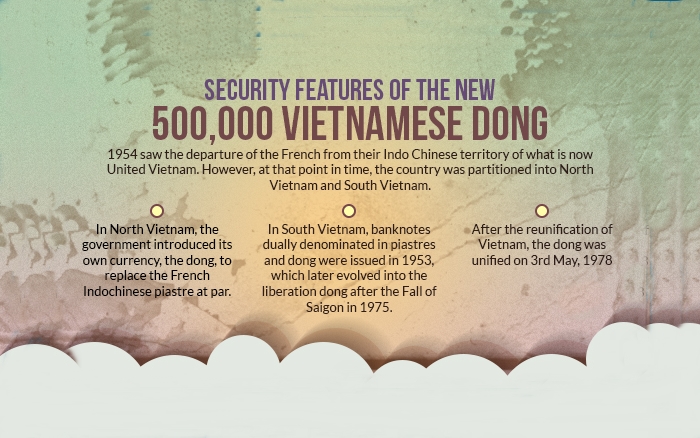Back to the Vietnamese Dong Buy Page
Vietnamese Dong Security Features for Latest 500K Note
The Vietnamese Dong (VND) is the national currency of Vietnam and since it was first introduced in 1978, has had a colorful history. Initially, the country of Vietnam was divided into the North and the South, each with their own distinctive currency. However, post reunification, the currencies of both the north and the south were merged to form the current Vietnamese dong.
The first unified currency issued by the State Bank of Vietnam was the 1 Dong aluminum coin minted in the then German Democratic Republic. However, over the years, the coins were phased out in favor of higher grade, cotton banknotes which are currently the standard in the country.
The first dong paper banknote dates back to 1976 and the highest value note in circulation back then used to be the 50 Dong banknote. Since then, as many as 5 different bank note series have been issued and with the exception of the current series, the notes lacked a unifying theme and a standard design concept which was generally considered confusing for the end user.
Currently, the 500,000 Dong banknote is the largest denomination in circulation today. Originally, the 500,000 note was issued in 1990. Post 2003, the cotton notes we disposed of in lieu of higher quality polymer banknotes which are printed in Australia and incorporate the best of modern currency security technology.
This infographic is designed to outline is great visual detail the many security features incorporated in the current 500,000 banknote along with comparative images of its previous iterations which can aid buyers and collectors alike in making informed purchase decisions.


[title size="2" content_align="left" style_type="default"]Leave A Comment[/title]